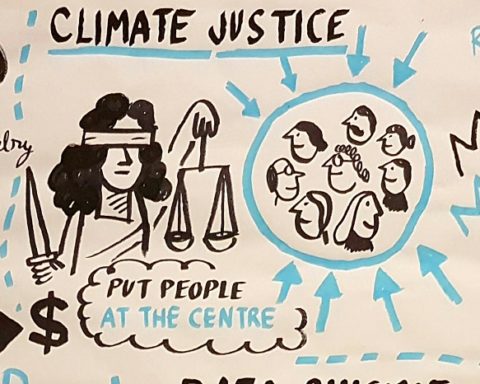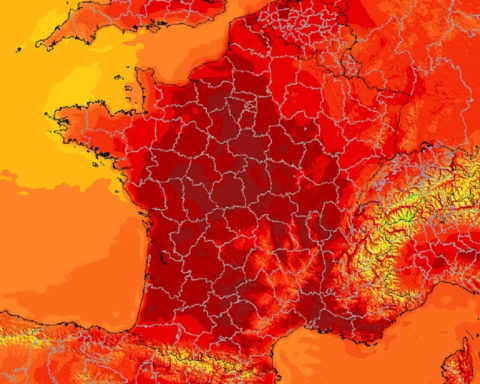While the ozone hole tends to close over Antarctica, scientists observe that this is far from being the case at lower latitudes, where sunlight is strongest and billions of people live. In these regions, the ozone that provides a layer against the sun's UV rays no longer protects us.
L’Ozone is the layer that protects us from highly carcinogenic UV rays. The ozone layer absorbs much of the UV radiation from the sun which, if it reaches the earth's surface, can damage the DNA of plants, animals and humans.
In the 1970s, it was recognized that chemicals called CFCs, used for example in refrigeration and aerosols, were destroying ozone in the stratosphere. The effect was worst in the Antarctic, where an ozone "hole" had formed. There was widespread mobilization at the time and, in 1987, the Montreal Protocol was approved, leading to the phase-out of CFCs and, recently, the first signs of recovery of the Antarctic ozone layer. The upper stratosphere at lower latitudes is also showing clear signs of recovery, proving that the Montreal Protocol is working well.
But this was without taking into account what was happening in other, more temperate latitudes, in which most of humanity lives.
An international study was conducted by a team of scientists from Imperial College London.
To conduct the analysis, researchers developed new algorithms to combine the efforts of several international teams that have worked to connect data from different satellite missions since 1985 and create robust and long time series.
Scientists have been interested in the low and middle latitudes of our globe. The very latitudes where billions of people live. Scientists have observed a drop in ozone in these regions. « It's a concern "says Professor Joanna Haigh of Imperial College, who notes that UV rays are most intense where most people live. « While the Montreal Protocol did what we wanted it to do in the upper stratosphere, there are other things we don't understand.. »
New research, published in the journal Atmospheric Chemistry and PhysicsThe data from the Canadian ozone monitoring program, the Canadian Ozone Monitoring Network, have carefully combined atmospheric ozone measurements from eleven different data sets to produce a 30-year picture. Researchers examined ozone levels between the 60th parallel, a region that stretches from Scandinavia, Russia and Alaska in the north to the tip of South America (Paris is 48 degrees North, Sydney is 34 degrees South and New York is 41 degrees North).
The stratosphere extends from 10 km above the Earth to 50 km and ozone slowly rises in the upper stratosphere. At this altitude, the ozone layer has returned to the levels observed before the CFC chemicals caused their damage and were banned by the Montreal Protocol.
But in the lower stratosphere, levels are dropping. Normally, scientists say, the effects balance out, but the fact remains that the ozone layer over the study area has been significantly depleted.
Although some datasets have already suggested a decline, the application of advanced fusion techniques and time series analysis have revealed a long-term trend of declining ozone in the stratosphere at lower altitudes and latitudes.
The cause of this decline is unknown, but it could be the result of global warming. Ozone is produced by chemical reactions in the atmosphere over the tropics and then distributed to the polar world by large air currents. But warming trends could strengthen these currents, moving more ozone towards the poles and leaving less ozone at lower latitudes.
Scientists have another suspect in their sights: "very short-lived substances" (VSLS) - industrial chemicals that contain chlorine and bromine and are believed to be ozone-depleting. They were thought to break down too quickly to reach the stratosphere, but may need to be re-examined.
Research published in July by Ryan Hossaini of Lancaster University in the United Kingdom and his colleagues showed that levels of a key VSLS, called dicholoromethane and used in paint strippers and aerosols, have doubled over the past decade. This substance is not banned by the Montreal Protocol and little is known about where it comes from or why emissions of this product have increased so rapidly.
William Ball, an atmospheric scientist at ETH Zurich, who led the new research, said: " The discovery of ozone depletion at low latitudes is surprising because our best current atmospheric circulation models do not predict this effect. Very short-lived substances may be the missing factor in these models.. »
" This work clearly highlights the fact that there are still unanswered questions about the drivers of long-term change in stratospheric ozone "says Ryan Hossaini in The Guardian. He alerts: " The health and surface UV implications of the ozone depletion trend need to be assessed as a matter of urgency. .»

Sources: The Guardian, Imperial College London












